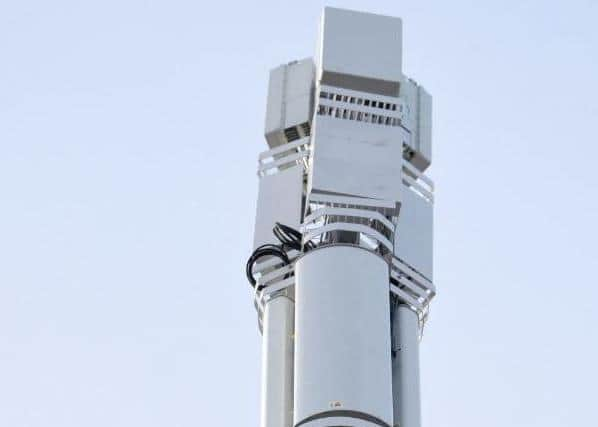This is everything you need to know about 5G - as two masts are installed in Blackpool
and live on Freeview channel 276
While 5G looks set to transform telecommunications around the world, the roll-out across the country has caused wide-spread controversy, particularly with conspiracy theorists linking the technology to the spread of Covid-19.
Here we answer some key questions around 5G, and the facts behind the rumours:
What is 5G?


Advertisement
Hide AdAdvertisement
Hide AdPut simply, 5G is the fifth generation mobile network which will aim to bring faster internet connectivity than it’s 4G predecessor to the town.
5G is smarter, and faster, than the 4G network and can allow more people to access faster download speeds with wider bandwidths.
How fast is 5G?
5G is around 10 times faster than 4G. It will work at an average speed of 150-200Mbps, and peak speeds could reach 1Gbps. In real terms you’ll be able to download aHD film in around 3 minutes.
Where is 5G currently available?
The new mobil network is available in parts of London, Edinburgh, Cardiff, Belfast, Leeds, Slough, Leicester, Lisburn, Manchester, Birmingham, Glasgow, Liverpool, Newcastle, Bradford, Sheffield, Coventry, Nottingham, Norwich, Bristol, Derby and Stoke.
Is 5G safe?
Advertisement
Hide AdAdvertisement
Hide AdThe radio frequencies 5G uses in the UK are similar to those that have been used for mobile telephones since 1998, when The International Commission on Non‐Ionizing Radiation Protection published its first set of guidelines for EMF exposure.
It is the first time since 1998 that the guidelines on protecting humans from radiation from phone networks, wifi and bluetooth have been updated.
However, these new guidelines don't apply to mast towers, but rather the 5G handsets themselves, imposing "more conservative limits" on radiation from mobile phones when they connect to high-frequency 5G.
The rules will focus on frequencies above 6 GHz which are not used for 5G in the UK at the moment but could be in the future as that level of frequency is currently in the US but will be arriving in Europe soon.
Advertisement
Hide AdAdvertisement
Hide AdThe ICNIRP concluded that, apart from some heating of human body tissue, there was no evidence of harm.
Why do some people think that 5G is linked to coronavirus?
Conspiracy theorists earlier this year that 5G can negatively affect the immune system, and Wuhan was the first city in China to get 5G.
The theory was widely spread in an anti-5G Facebook Group, which has more than 27,000 members, and regularly shares videos and posts that associate the spread of coronavirus with the rise of 5G connectivity.
One post which claimed that 5G was rolled out of Wuhan, the city at the centre of the outbreak, was shared more than 300 times when it was posted in late January.
Advertisement
Hide AdAdvertisement
Hide AdThe post now carries a warning that it has been debunked by independent fact-checking charity, Full Fact.
The charity found no evidence that Wuhan was the first city to receive 5G coverage, pointing out that it was just one of several Chinese cities where 5G trials took place, with Beijing, Shanghai, Guangzhou and Hangzhou already covered by the network by October 2019.
The suggestion that 5G can be harmful to the immune system was also firmly dismissed, with the charity insisting the claim is “totally unfounded”.
In a report, Grace Raham from Full Fact wrote: “There is no evidence that 5G is harmful to humans.
Advertisement
Hide AdAdvertisement
Hide Ad“5G is the next generation of wireless network technology, following on from 4G. Like 4G, 3G and 2G before it, 5G mobile data is transmitted over radio waves - a small part of the whole electromagnetic spectrum (which includes microwaves, visible light and X-rays).
“These radio waves are non-ionising, meaning they don’t damage the DNA inside cells, as X-rays, gamma rays and UV rays are able to do.
“5G, although at slightly higher frequencies than previous networks, is still in this radio part of the electromagnetic spectrum.”
Public Health England also said there is no “convincing evidence” that exposure to such non-ionising radio waves can cause adverse effects on health.
Read the full article here
Comment Guidelines
National World encourages reader discussion on our stories. User feedback, insights and back-and-forth exchanges add a rich layer of context to reporting. Please review our Community Guidelines before commenting.